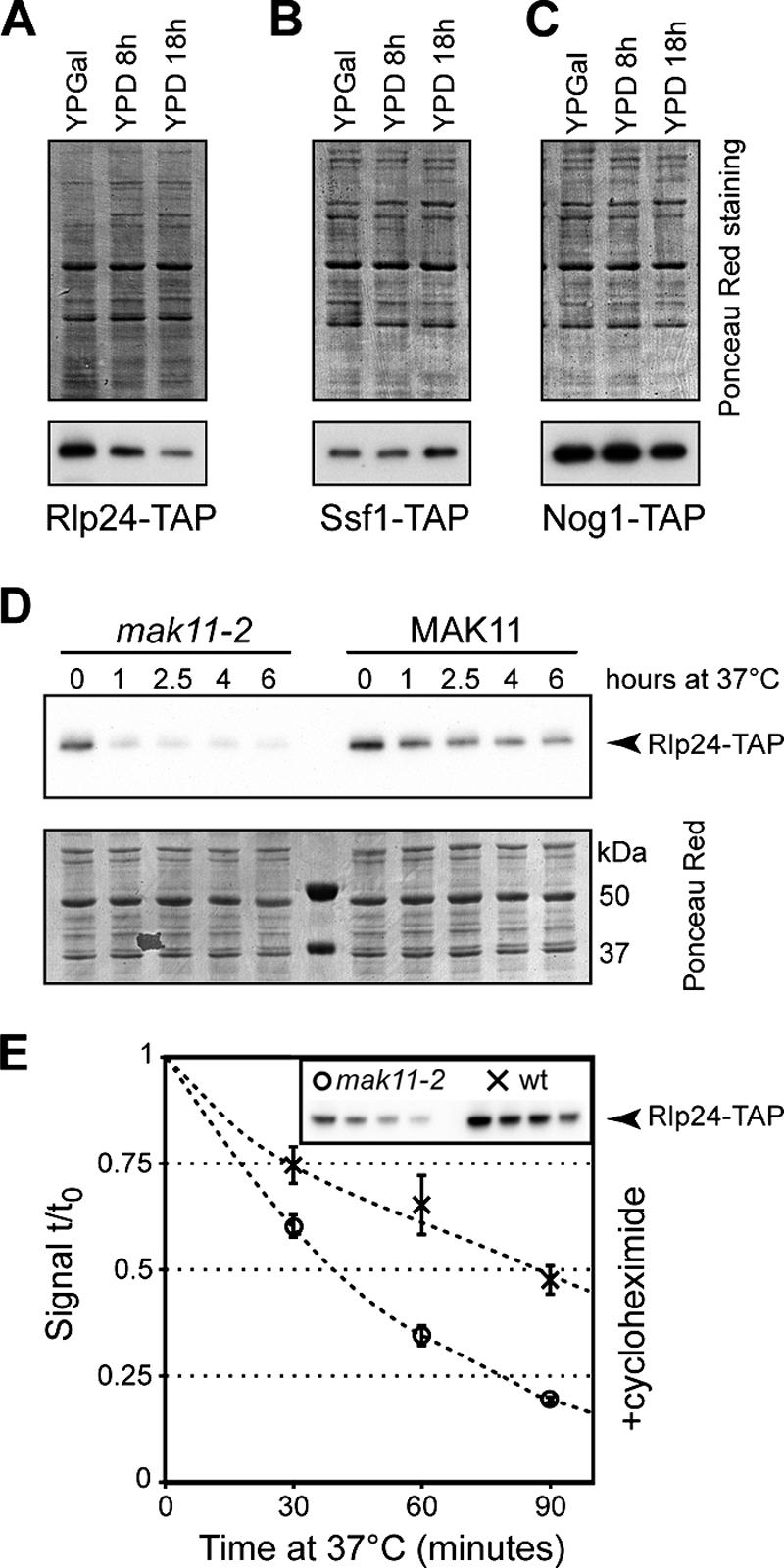FIG. 6.

Mak11 stabilizes Rlp24. (A to C) Strains expressing Rlp24-TAP (A), Ssf1-TAP (B), and Nog1-TAP (C) with MAK11 under the control of a GAL1 promoter were grown on rich galactose medium and shifted to glucose for 8 and 18 h. The amounts of the tagged proteins were estimated by immunoblotting for the TAP tag; the total amounts of loaded proteins on each lane were estimated by Ponceau S staining of the nitrocellulose membranes. (D) Strains expressing Rlp24-TAP and either the mak11-2 allele or wild-type MAK11 were grown on yeast extract-peptone-dextrose at 27°C and shifted to 37°C for up to 6 h. The amount of Rlp24-TAP was estimated by immunoblotting (upper panel), and the amount of loaded total protein was visualized by Ponceau red staining (lower panel). (E) The stability of Rlp24-TAP in the mak11-2 (open circles) and wild-type (crosses) strains was measured by simultaneously shifting the culture from 27°C to 37°C and adding 35 μg/ml cycloheximide. The immunoblot signal was plotted as a ratio to the initial Rlp24-TAP amount. The inset shows a typical image used for quantification. The standard deviations of the results for three independent cultures are indicated as error bars.
